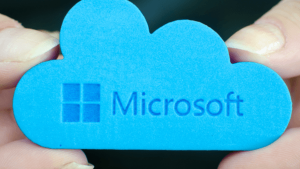- December 4, 2018
- Erik Bullard
- Reading Time: 3 minutes

As the year end approaches, many organizations find themselves in the final strokes of their Microsoft renewal negotiation. Microsoft is gearing up to close the books on their FY19 Q2 and is counting on your contract to close with an increased financial commitment. After months of pushing back on significant price increases and entertaining talks about new Microsoft solutions, ‘push has come to shove’ and it is time to execute your renewal paperwork.
For many organizations, this decision includes the possibility of jumping into Microsoft’s cloud and away from a traditional on-premise environment. For others, this decision is geared around accepting a bigger bill for the same functionality (in some cases even reduced functionality — but more on that later) or adopting something new like Azure and leaping further into Microsoft’s cloud just to drive down price increases on current solutions.
How Microsoft Entices You to Adopt Cloud Products
If you are considering adopting a Microsoft cloud solution for the first time or considering additional cloud products, chances are Microsoft has aggressively approached you with a “sweet” looking discount to entice you to do so. This positioned one-time discount was almost certainly presented after first showing you a much more expensive price, so Microsoft can say “look how much we are doing for you with this discount!”
Are you concerned that this “sweet” discount will disappear when you renew? You should be. Were you assured by your Microsoft account representative that you don’t need to worry because cost won’t be an issue, now or later? The sad truth is that unless you have the proper renewal term price protections in place, you should probably model your future spend (i.e., the years subsequent to your upcoming renewal term) based on the first and less attractive price. For most, the spend should be based on even worse pricing.
Why Discounts Aren’t Always Valuable
Organizations that already adopted cloud products at their last renewal are learning that perhaps that “sweet” discount was not so sweet after all. Oftentimes organizations are sold on the functionality of a bundled solution such as Microsoft 365 (which includes Office 365, Windows, and Enterprise Mobility + Security), but are unable to utilize much of the functionality. The previous discounting to “alleviate” that concern is gone and now the organization is staring down the barrel of significant price increases with no added value. Microsoft is pointing these organizations to new cloud solutions and more robust editions (E5 anyone?) as the only means to obtain another “sweet” one-time discount.
In addition to the removal of discounts, organizations need to be aware of programmatic changes that can also have lasting impacts. For example, in October, Microsoft increased pricing for on-premise Office 2019 commercial prices by 10%. The price increase itself isn’t as important as the motivation behind it; Microsoft is pushing organizations to their cloud.
Not only are organizations exposed to price increases, they are also exposed to a constantly evolving set of product terms which govern the way products can be utilized in practice. The latest product terms, updated November 1st, will remove the ability to install on-premise Office Professional Plus on machines where the user is covered under a Microsoft 365 E3 or E5 subscription. This is a scenario that many organizations operate under and there are restrictions with this ability to begin with, but if those organizations require local Office Pro Plus installations, they will be forced to make incremental purchases for software that they once owned.
Ensuring you have the right deal in place and proper commercial protections is only half of the battle. It is vital to fully understand the implications of a cloud agreement with Microsoft before you make the jump.
Please leave a comment below, follow me on Twitter @ITsourcingGURU, find my other UpperEdge blogs and follow UpperEdge on Twitter and LinkedIn.
Related Posts:
Related Blogs
Understanding Microsoft’s Removal of From SA SKUs: Customer Impacts and Recommendations
What Matters Most to Microsoft in 2024
4 Major Updates to Copilot for Microsoft 365: What Customers Need To Know
About the Author
